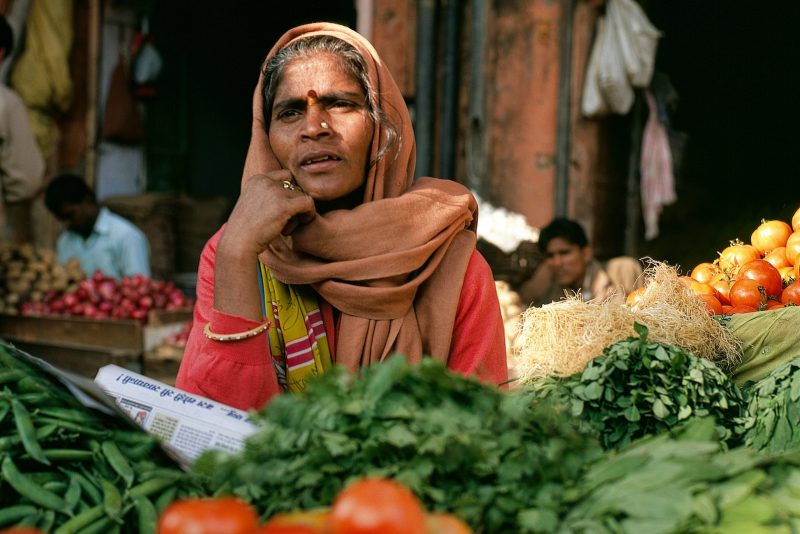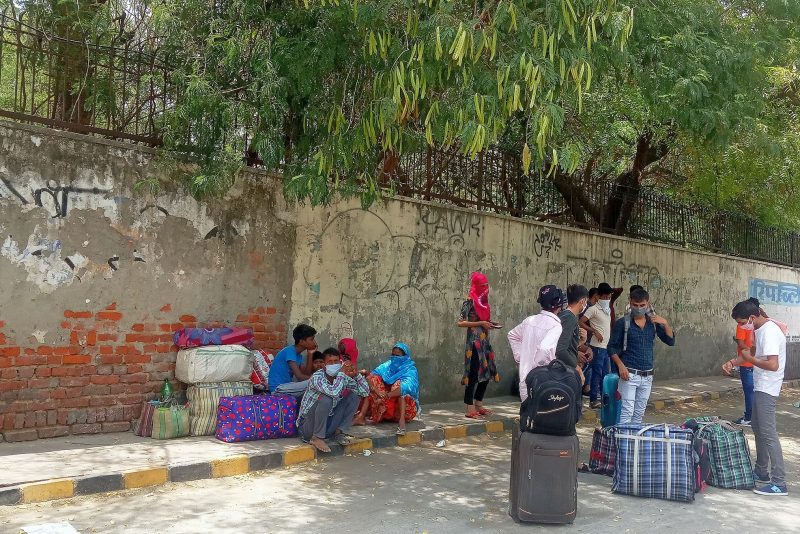Lessons from implementing a field survey in India
Soumya Gupta is a PhD candidate at Cornell’s Dyson School and a research scholar with the Tata-Cornell Agriculture and Nutrition Initiative (TCi). This blog first appeared on the Economics That Really Matters blog (www.econthatmatters.com).
My dissertation research (described in greater detail here) focuses on linkages between agriculture and health. I look at how different farming systems influence women’s iron status and empowerment in agriculture. To answer these questions I spent three semesters in the Chandrapur district of Maharashtra in India collecting primary data on agriculture, food security, dietary intake, women’s empowerment, anthropometry, and blood samples to assess iron status. We surveyed a total of 1,920 individuals. Here are some things I learnt along the way.
Invest time in the details up front
I am struck by what an enormous effort it took to lay the groundwork at every step of the way. I’ve detailed a few of those steps below.
Formative research: In this phase of preliminary research we modified questions and response options to suit the local context and gathered information on local land use and agricultural practices. Some of the things we had to decide were:
- How many households/villages to visit and their selection criteria.
- Which methods to use, whether qualitative, quantitative, or mixed.
Household selection: The road to a random sample of households was paved with the pains of generating lists of households that met our inclusion/exclusion criteria. This entailed identifying:
- What lists of households are available, from which sources and in what format (hard vs. soft copy).
- How multiple lists can best be triangulated to suit the selection criteria.
- How to get a copy of these lists, whether by photocopying, taking pictures, using a flash-drive (beware of viruses), or having it emailed.
We took hundreds of pictures of the lists obtained from local schools, health centers, property and water tax office, and the agriculture office. After transcribing them from Marathi to English we eventually generated a final list of households per village that met our criteria.
Team: We decided on the size and composition of our team based on sample size of the survey, time anticipated to survey one household, budget, and average daily travel time. To choose team members we administered written and computer tests, and an interview, to assess basic understanding of research methods, level of computer proficiency of each applicant, and previous field experience, respectively. A waitlist by designation and gender allowed for a relatively quick replacement of staff later on. The training schedule was designed to systematically transition from a traditional paper-based to a tablet-based interviewing method, and from in-class to field-based sessions. It also allowed us to test the survey software for any inconsistencies in questions, response options, and skip-codes.

(Checking each batch of blood samples after they are centrifuged in the field. Photo by Soumya Gupta.)
Keep good field notes/documentation
Since my return from India, I have had to return to my field notes several times, not just for details about the various steps of my survey design, but also when trying to interpret some of my results. My notes from the phase of formative research in particular have brought back contextual references that I otherwise would not have been able to recall.
From an administrative/accounting point of view, the regular cycle of funding required us to be obsessive about expenditure receipts, service contracts, and so on. Incidentally, it’s a good idea to discuss acceptable alternatives to receipts with your funding source since many local services (such as photocopying, stationery, and local transport) often do not provide receipts.
Collaboration is a balancing act
Collaboration is hard—and can be tricky—at many levels, including research design, logistics, and cultural context.
Research design: I was collaborating with nutritionists and medical doctors while developing the research design for this study. On the one hand, interacting with these experts forced me to broaden my understanding of certain methodological approaches. On the other hand, this collaboration made me repeatedly return to the different motivations that can influence the scope of a survey. For instance, a highly detailed questionnaire or information on multiple iron assays would provide us with a lot of data from a research point of view. However do we really need all that information and would people actually give us all that information? The challenge is to figure out how and when to incorporate which inputs, and say no to the rest, without offending anyone. In the end a frank – and respectful – discussion about the research goals and constraints of time, budget, physical and human resources, together with support from my dissertation committee, helped us agree on a middle path.
Logistics: Approaching, discussing, negotiating, and following-up with service providers of various kinds (electronics, computer software, pathology laboratory) were, for me, the biggest source of frustration. Once a contract was signed, the providers would send in receipts for part of the payment at regular intervals – without delivering the product or service. I realized, eventually, that all it took was one email saying ‘your receipt has not been approved’ for everything to suddenly work like clockwork. She who controls the money has the power.
Cultural context: In the Indian context two other factors complicate matters further – gender and hierarchy. When you’re female and most of your collaborators are men who are older than you (in age or designation, or both), you will encounter cultural nuances that are quite challenging. In addition, the social hierarchy determines, quite often, the pace and/or outcome of various decisions. It helped me to communicate directly with the higher-ups or make it known that the main higher-up in our survey was me.

(A male enumerator plays along with a little boy as his mother is interviewed for the survey. Photo by Soumya Gupta.)
It’s all about the team
Your dissertation research is like your baby. What makes (or breaks) the survey is having a key number of people on the team for whom your dissertation research is like their baby too. My team’s project coordinator and two supervisors were crucial in maintaining the quality of the survey in ways that went beyond the daily monitoring of enumerators. They would resist replacement of households to please the village headman, subtly distract people who were influencing responses, and in general handle the power dynamics (and egos) in the villages with patience and tact.
Having 20 local enumerators also made the survey team appear less like a team of ‘outsiders’ from the respondents’ point of view. Several of them had worked on surveys previously, and were able to offer insight during the training as to what sort of questions we might face in the field and to come up with strategies, as a team, to answer them. The benefits of this teamwork are best seen in the blood study where we ended up with a non-response rate of less than 1.5%.
Of course no team can be perfect. So don’t be afraid to replace (read ‘fire’) people.
To conclude, we had our share of flat tires, scorpion bites, extreme heat, and broken equipment. But we also met exceptionally kind people who shared their homes, time, and lives. Selfish as field research sometimes felt, it was an incredibly humbling experience too. Organized planning, quality control, and building working relationships with collaborators, enumerators, and community members were key to my successful survey.





